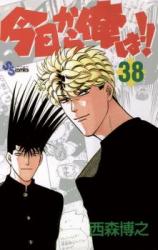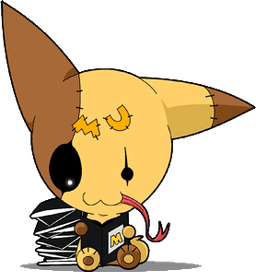This series is a real anomaly. This one is extremely heavy on the gags. Very funny gags surrounding a main character who is almost too narcissistic to be real, the sort of character that's really hard to involve in a serious story or engaging character arc without becoming 100% comedic. Yet it manages to pull it off with surprising finesse.
One of the real strengths of this series, compared to other shounens, is how much it manages to ground itself into a relatively believable real-world scenario of actual delinquent life while also being entertainingly larger than life. Real-life depictions of violence often undercut the comedic tone in equally grim situations. As a delinquent series, it does not shy away from subject matter such as sex trafficking, drug smuggling, senseless acts of brutal violence against bystanders and attempted murder--along with the expected ruthlessness of turf wars and intra-gang violence. Conversely, the series wrings out some very entertaining stories by merely presenting the deliquents real-world problems punks like them would face, such as finding worth with the reputation as a brawler, attempting to fit in in more domestic setting, or just doing a good deed without a suspicious bystander calling the police or getting the wrong idea.
While the main characters are extremely skilled brawlers, they also have believable limitations which also helps ground the series. The presence of Yakuza swords, knives, scares the shit out of them more often than not and they frequently resort to running away from large groups of thugs or naturally unwinnable situations such as when those same weapons are used. The frequent use of dirty tactics, including attacking from behind and groin kicking are often shown as necessity in tight spots, subverting and often questioning the typical notion of "fair fights." Characters rarely make it out of situations unscathed, and they are usually forced to use their wits and street smarts to win rather than brawl head-on.
Another highly atypical trait is that this series is very satirical and self-aware in terms of shounen cliches and taking itself too seriously too much of the time, to the point where the sometimes even break the fourth wall. This is especially apparent in the first 30 volumes in which very serious character and story arcs will very often subvert "victories" by having reality or cruel turns of fate send them back down to earth, or even worse off than before. Even in the middle of serious fight, Mitsuhashi or Imai will deflate the situation with some very welcome wisecrack or action that can turn a dramatic moment into complete farce.
Of course, the main appeal is Mitsuhashi himself. The manga tread a very fine line in making the character a completely self-centered and pitiless bastard, yet also giving him enough of a likeable, cute, and impish personality. His pranks are often hilariously cruel and relenting, yet I very rarely felt it went too far. He has so much comic potential, that he could be thrown in almost any situation or setting and still find a way to make it memorably funny. Mitsuhashi's unique way of fucking with people with often unpredictable consequences is a rare gift that the series is not a bit shy in making heavy use of, both in major and minor story arcs. Most shocking of all is that he gets a decent amount of character growth and depth later on while still not losing his chaotic nature. His partnership with the more virtuous Itou actually enriches both characters as the series increasingly probes into what makes each character tick and their friendship/partnership
That's not to say other characters get reduced to window dressing. This series has some very good characters and character growth. What begins as a mere set-up for comic and action vignettes in v1, the series gradually increases in cast, and what initially seem like throwaway characters initially get quite a bit of fleshing out. Imai and Tenegawa particularly stand out in this regard. Little more than comic foils or generic thugs early on, they both get an enormous amount of panel space in later volumes and entire character arcs are devoted to them and their exploits along with their inner passions and dreams. Past "villains" also get additional panel time and we get to see how they adjust in Japanese society and whether they become better or worse people over time.
While somewhat more secondary, I was also quite impressed with how the female characters were handled. Sure, there were a few damsels, but much of the girls possessed a refreshing amount of piss and vinegar, either getting involved in brawls themselves or keeping many of the male characters in check. Outside of Riko's habit of shoving Mitsuhashi in a flirty sort of way, most of KKOW's females use more bleievably catty or outspoken ways of showing their displeasure with the male characters. Ecchi style humor is very rare, and the females will more often shoot down opposing male egos or romances outright in several occasions. That's not to say they're man-hating bitches either, just they their not often easily swayed by the frequently displays of street fighting and bragging or willing to fall into a man's arms at the drop of a hat, unless exaggerated for comic affect.
Art starts out crude in the first volume or two, but it's very appropriate for the gag-heavy nature of the early stories. It naturally improves over the course of the 30+ volumes, becoming much more assured after the first few volumes. Yet the early volumes display a chaotic, more freehand style that parallels Mitsubishi's anarchy and cockiness--an anything goes approach that I found appealing. The more action-oriented scenes improve over each volume, eventually becoming very well staged and shifting gears between gag comedy and serious drama with absolute ease, with some equally appealing chibi artwork.
I personally found the manga art much more appealing than art used in the anime. While the anime attempted a more generic early 90s character design and beefing them up to the point where they resemble DBZ characters rather than high school students, the manga had much more appropriate proportions, reserving their more tall and intimidating presentations for key scenes and fights. Itou in particuar looks almost nothing like his anime counterpart, who looks like Vegeta with 3x as much hair. "Urchin-kun" had tall spiky hair, but it certainly didn't tower over him like a chef's hat. In short, read the manga, then the anime and the difference will be night and day.





